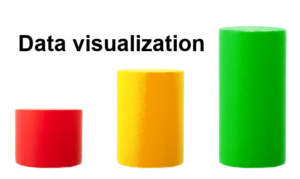By Roger Portela, Senior Director of Product, PayNearMe
Every day, valuable data flows through your payments platform. But how it’s collected, where it ends up and how useful it becomes depends on how it’s managed along the way.
Think of it like a river. That river can be directed or harnessed to yield valuable outcomes: irrigation for a farm, hydroelectric power or improved flow for native fish populations, for example.
Data is similar. To fully capitalize on its value – for decision-making, automation enablement and advanced analytics – the data must first be correctly and carefully managed. Otherwise, it sits idly in a database or populates spreadsheets or data management tools that only specialists can access and understand.
Even more concerning, companies that lack control over their data are missing out on the promise of artificial intelligence (AI) and machine learning (ML).
Transforming Payments With AI Requires Plentiful Data
AI and ML have become vital components in enabling banks and lenders to remain competitive. These technologies can help you deliver a more personalized payment experience, drive self-service, increase efficiency through automation and minimize fraud and risk.
Effective utilization of data begins with having accessible, well-managed payments data. Follow these five steps to make the most of your data assets:

Step 1: Collect fresh, high-quality data continuously
What it does: Ensures the accuracy of machine learning.
Payments data grows stale quickly, which can impact the accuracy and effectiveness of machine learning.
Let’s say you want ML to identify and flag patterns of payment behaviors that could indicate fraud. For ML to become proficient at that task, it must continually learn on a large flow of fresh data from your customers and, ideally, other sources. Fresh, high-quality payments data gives the model the most opportunities to recognize unusual events and alert you immediately of potentially fraudulent activity, getting more proficient as it goes.
To accomplish this step, your payments platform provider can use data pipeline management and observability tools that continuously take data from its original source into a data lake or database and evaluate the amount and quality of the data. This process can train ML models and alert them of any deficits or anomalies that require attention.

Step 2: Clean and consolidate the data
What it does: Prepares multi-source data for use in analysis and modeling.
Data used for ML typically comes from numerous databases, extraction points and connectors that feed into your payment platform provider’s large data warehouse. To make the data useful for both analysis and modeling, it must first be cleaned of duplicate, corrupted, irrelevant or incorrectly formatted information.
Your payments platform provider may have AI technology in place to accelerate these workflows. One area that AI excels in is making sense of unstructured data. AI supports and enhances the capability to harness unstructured data for machine learning purposes by automating complex processes, ensuring data quality and privacy, and enabling sophisticated pattern recognition and predictive analytics.
AI can also detect and notify the provider of any schema changes that require attention. With those steps in place, your provider can easily determine which data to prioritize for cleaning and which to incorporate into visualization or test modeling.

Step 3: Democratize the data
What it does: Makes data directly accessible to everyone in your organization.
Payments data can be helpful to many teams within your organization, but only if the data is available to everyone – technical and non-technical personnel alike.
The solution is a business intelligence tool provided by your payments platform provider that provides all stakeholders access to relevant data. It removes the typical silos and gatekeepers so your employees can pull the data they need when they need it to aid decision-making and support business objectives.
Imagine your marketing team analyzing payments data to determine which customers might be good candidates for an upsell opportunity or new product. Or your customer service leaders pulling data to strategize how to move more callers to self-service. AI can also help organizations understand and optimize their Customer Acquisition Costs (CAC).
Your team could even want to build custom analytic models and code your own ML – or leverage a low/no-code solution – with the payments platform provider maintaining visibility as a data governance precaution.

Step 4: Simplify data visualization
What it does: Presents data in an easily digestible format.
Presenting data in complicated spreadsheets is difficult for everyone but the most experienced data analysts to detect patterns or trends. That limits its usefulness.
Your payments platform provider should present data in visual formats that can be read and understood at a glance. Imagine graphs that reveal an upward or downward trend in on-time payment. Or dynamic charts that allow users to view payments data from various perspectives with a few easy clicks: by payer age or region, according to payment type or channel, over the past payment period or the past year, and more.
Turning raw data into graphic visualization empowers faster, more informed decision-making for every part of your business, such as identifying accounts at risk of becoming delinquent, understanding the profile of an ideal customer for autopay enrollment or exposing areas of friction in the payment process.

Step 5: Provide context
What it does: Gives you a broader perspective on your data.
Looking at your data can yield valuable insights. However, bringing in other data sources widens the lens so you can understand the broader context, taking analysis to a whole new level.
For instance, your payments platform provider can display your data compared to industry averages to see where you rank in various categories. You can also tap external data sources, such as credit bureaus, the Census Bureau or the Bureau of Labor Statistics, to learn more about your customers. For instance, external data may reveal an economic downturn in a particular region, allowing you to predict which customers might need intervention to prevent default.
Thanks to AI, this type of analysis, using vast amounts of data, can be conducted quickly – often in a matter of hours. This gives you the insights and information you need to make full use of your payments data to serve your customers better and advance your goals.
Enlist your data experts
Your payments platform provider already facilitates your day-to-day processes. Why not ask them to be your data experts, helping you squeeze every last drop of value out of your payments data?
Not every payments platform is positioned to do that efficiently and effectively. Some legacy systems aren’t nimble enough for AI-powered data collection, democratization and analysis. If that’s the case, you may need to look for an alternative partnership.
With the proper expert support, you can take the steps needed to harness the power of AI and ML to fully utilize your data for strategic decision-making and improved business outcomes.
About the Author

Roger Portela is the Senior Director of Product at PayNearMe, where he leads customer experience product development teams. With more than 25 years of payments and product experience, Roger ensures PayNearMe’s solutions lead the market by reducing consumer friction and offering the widest range of payment options and channels, all while staying focused on security and reliability to ensure clients collect every payment, every time.

